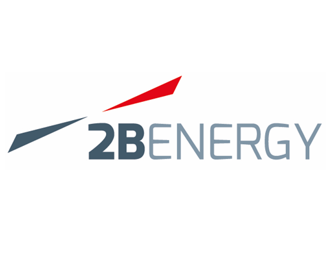123Fab #32
1 topic, 2 key figures, 3 startups to draw inspiration from

While offshore wind stagnated under Trump, President-elect Joe Biden’s policies could create a clean energy surge. Indeed, Joe Biden’s climate plan proposes building thousands of offshore wind turbines to put the US on a path to carbon-free electricity by 2035. On the other side of the Atlantic, the EU Strategy on Offshore Renewable Energy, published in November 2020, also acknowledges that harnessing the energy potential of European waters is crucial to meeting climate targets, and estimates that at least 60GW of offshore wind capacity will need to be installed by 2030 (compared to 18.5MW installed today).
Offshore wind farms are able to generate more electricity at a steadier rate than onshore wind farms thanks to higher and more consistent wind speeds. If the wind blows stronger offshore, the total cost of energy (installation, material costs, etc.) is higher, and the operations (grid connection, etc.) are more complex than onshore wind turbines. The growing attractiveness of the offshore wind market can be explained by all the technological improvements that have made it possible to increase turbine capacity and reduce costs.
The technology developments in the offshore wind sector span across the entire value chain:
- Wind measurement: If met masts (steel towers with measuring equipment on top) are the standard for onshore wind turbines, LiDAR (Light Detection And Ranging) solutions are best suited for measuring wind speed on offshore installations. They can remotely measure distances to a target using lasers, are easier to install and maintain, cheaper and more reliable, and safer for workers. According to the Danish company Windar Photonics, they can even increase energy production by 1 to 4%. This manufacturer of LiDAR solutions sells, among others, WindEYE, a two-beam radar (80m) mounted on a wind turbine nacelle, that corrects any misalignment.
- Turbine: Several types of turbine innovations are underway. First of all, efforts are being made to increase the speed of the blade tips (there is no noise problem as there is with onshore wind) from 70-80 m/s to 90-100 m/s, to generate more power. Further efforts are being made on rotor design, with 2 blades instead of 3, which allows manufacturers to reduce costs and downwind designs are suitable in regions with typhoons. These turbines can be found in the port of Eemshaven, in the north of the Netherlands.
- Foundation and support structure: New concepts to reduce installation costs and improve safety are being developed. A 3-legged jacket design, instead of 4, facilitates installation while reducing material costs. When it comes to the foundations, screw piles are being replaced by suction bucket technologies. Water is pumped out of upside-down buckets, thereby creating enough differential pressure to hold the foundation to the seabed. This technique was first used in 2018 for the European Offshore Wind Deployment Centre (known as Aberdeen Offshore Wind Farm). Self-installing gravity foundations are also being tested as they limit costs by reducing the use of heavy equipment vessels. The foundations are produced on land, towed to the wind turbines and then immersed with water and sand to rest firmly on the hard seabed.
- Operations and maintenance: Automated inspection by drones, instead of being performed manually, is expanding. For instance, the startup Skyspecs offers an aerial blade monitoring drone solution that can complete a turbine inspection in less than 15 minutes. On top of increasing safety, the inspection report is more accurate and reduces maintenance times. To reduce time-to-repair and revenue losses associated with component failures, companies are creating predictive maintenance solutions. Australian company Ping has developed an aero-acoustic detector that uses sound to detect damage over blades by analyzing airflow and giving quick alerts once detected.
More specifically, innovations in floating offshore wind are accelerating along with the strong interest in this technology. Indeed, countries with few shallow sites, such as Japan and the US, see this as a significant opportunity. French startup Ideol is a major player in this market. In 2018, they installed their first floating demonstrator in Saint-Nazaire, successfully constructed floating wind turbines off the coast of Japan, and are currently building (2021-2022) a new floating wind farm in the Mediterranean sea.
Although the offshore wind sector has witnessed many innovative technologies, its large-scale implementation is limited by some remaining challenges. Above all, costs remain high (R&D, components, installations, etc.), large investments are needed, so economies of scale are still limited. Secondly, the lack of onshore electrical infrastructure to support offshore wind farms is a technical difficulty that needs to be addressed. HVDC (high-voltage direct current) electric transmission seems to be a good solution for long-distance transmission, as it reduces losses and cable costs. The cost of transmission, on the other hand, remains pretty high. A few demonstrations of this new technology are on-going in the North Sea. Finally, there are several environmental issues associated with the installation of the windfarms. A few examples are the inference of fishing sites and the collisions with birds and disturbance of nesting grounds. Orsted, the Danish group that has led the growth of wind at sea, is now desperately trying to find a way to look after a colony of kittiwake seabirds that is holding up a $10bn project off eastern England.
To conclude, offshore wind energy is an attractive and increasingly mature market. From a sector once driven by considerable government incentives and support, we are moving towards a market-driven industry. Innovations such as LiDAR, floating wind turbines and AI are having a game-changing impact on the sector.
2 Key Figures
88 Offshore wind startups
registered by Crunchbase
Market size expected to reach $59.9bn by 2025
The market size of offshore wind energy is expected to reach $59.9bn by 2025, a CAGR
3 startups to draw inspiration from
This week, we identified three startups that we can draw inspiration from: 2-B Energy, Ideol, and ONYX InSight.

2-B Energy
2-B Energy is a startup specialised in developing wind turbine generators and power plants. It sells a turnkey solution, including the fully-integratd towers and foundation design. 2-B Energy focuses on driving costs down to make offshore wind more sustainable.

Ideol
Ideol is a leading startiup in floating foundations for offshore wind. It contributes to all stages of floating wind projects, from conception to installation. Their core product is their Damping Pool® floating technology.

ONYX InSight
ONYX InSight provides a condition-monitoring and predictive maintenance software in the wind industry. It collects, monitors and analyses data in real time, to predict faults and make tailored maintenance recommendations.
